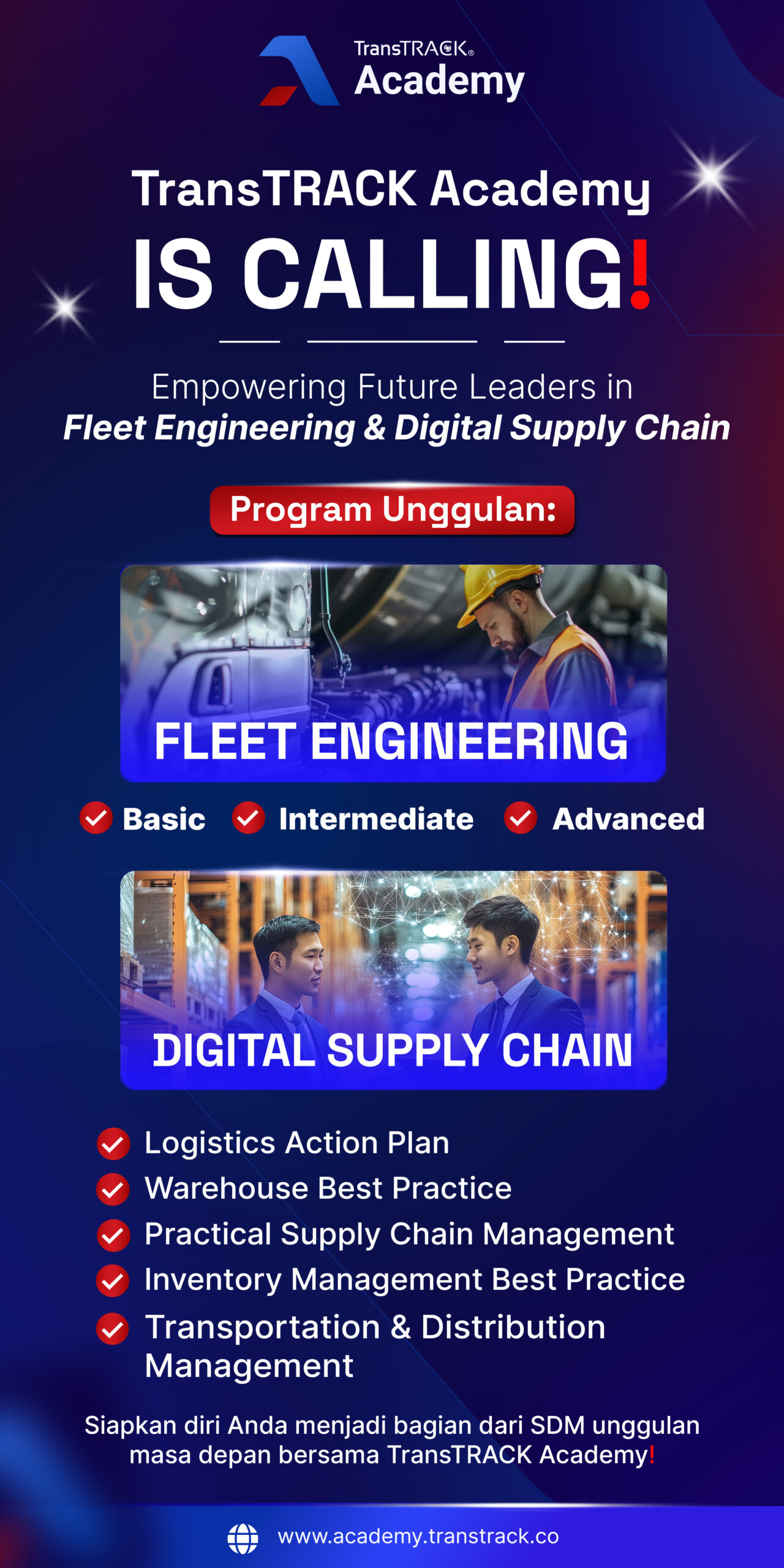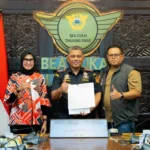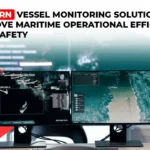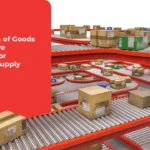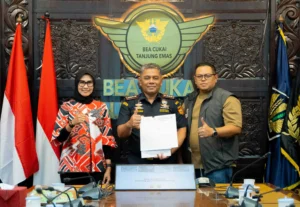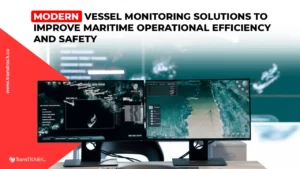Digital Transportation: Smart Solutions for Every Industry Sector in Indonesia
Posted on May 8, 2025 by Nur Wachda Mihmidati
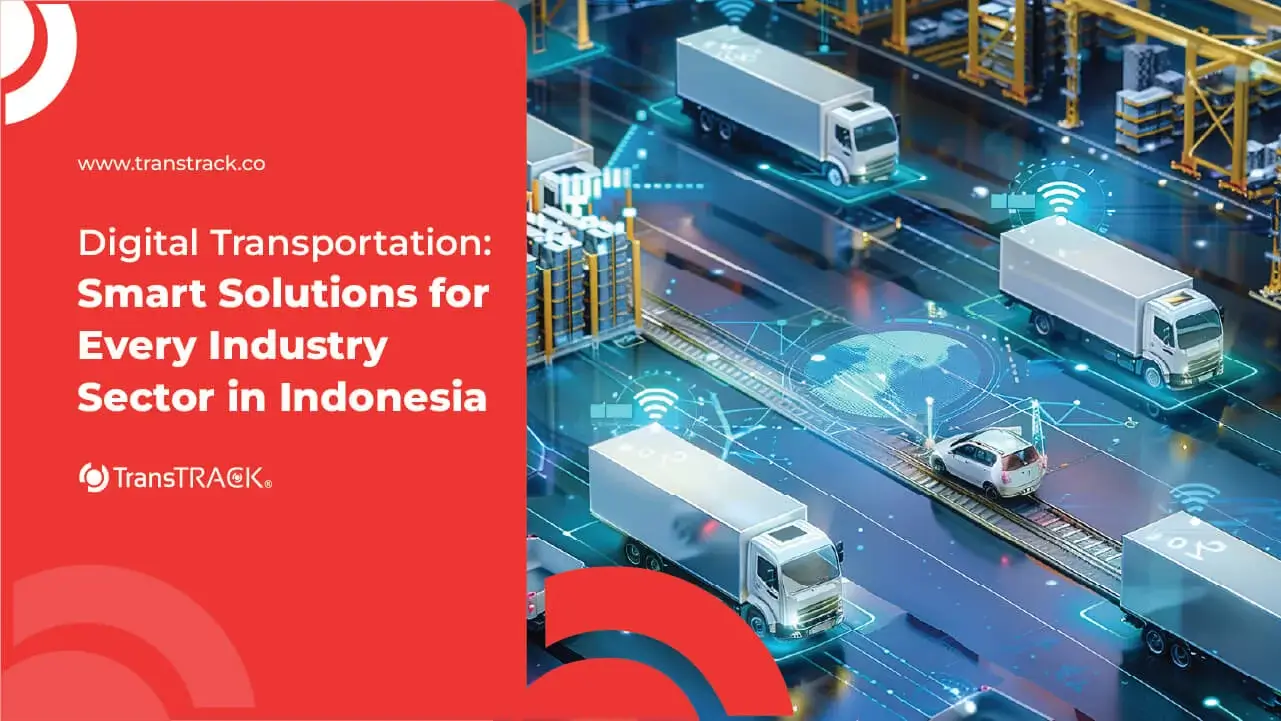
In today’s digital era, technological transformation is not only happening in the communication and finance sectors, but also in transportation. Digital transportation is a modern solution to overcome various operational challenges-from delivery delays, limited real-time information, to high logistics costs.
Through the integration of technologies such as Internet of Things (IoT), Artificial Intelligence (AI), Big Data, GPS, and cloud computing, transportation has become more intelligent, transparent, and efficient. Not only does it speed up the distribution of goods and human mobility, digital transportation also supports data-driven decision-making and improves road safety. Find out more through the following article TransTRACK!
What is digital transportation?
Digital transportation is a concept that refers to the application of digital technologies to improve the efficiency, safety, convenience, and sustainability of transportation systems. It includes the use of software, sensors, information systems, as well as real-time data communication in the management of transportation modes, infrastructure, and the movement of goods or people.
What technologies are used in digital transportation?
Here is an explanation of the main technologies used in digital transportation, along with their roles and functions:
1. Internet of Things (IoT)
IoT connects various physical devices (such as vehicles, sensors, traffic signs) to the internet network to send and receive data in real-time.
🔹 Function:
- Monitoring vehicle condition (engine, temperature, tire pressure, etc.)
- Live tracking of fleet location
- Driver behavior monitoring
- Load, cargo hold temperature, or fuel sensors
🔹 Example:
- GPS trackers and fuel sensors on logistics trucks
- ADAS cameras and sensors for driving safety
2. Artificial Intelligence (AI) & Machine Learning (ML)
These technologies are used to process huge amounts of data and make automated decisions based on patterns or predictions.
🔹 Function:
- Recommend the fastest and cheapest route
- Detection of aggressive driver behavior
- Vehicle breakdown prediction (predictive maintenance)
- Automation of dispatching & scheduling process
🔹 Example:
- AI to detect driver fatigue through cameras
- ML to analyze fleet delay patterns and provide solutions
3. Big Data Analytics
Big Data enables the collection, processing, and analysis of data at scale for strategic decision-making.
🔹 Functions:
- Analyze traffic patterns or fuel usage
- Evaluating driver and vehicle performance
- Regular reporting of fleet/logistics performance
🔹 Example:
- Fleet management dashboard with performance graphs and delivery history
4. Cloud Computing & Mobile App Integration
Cloud technology allows data and transportation systems to be accessed from anywhere, while mobile applications allow users to interact in real-time.
🔹 Function:
- Access fleet/logistics data remotely
- Driver app to receive tasks and reports
- Collaboration between operators, managers, and customers
🔹 Example:
- TransTRACK mobile app for drivers and fleet managers
- Cloud-based platform for dashboards and reporting
5. GPS and Geofencing
GPS technology is used to track the position of vehicles, while geofencing creates virtual zones to regulate vehicle behavior.
🔹 Function:
- Accurately locate the vehicle
- Notification if the vehicle deviates from the designated route
- Arrival time and delay monitoring
🔹 Example:
- Automatic alarm when a vehicle leaves a designated area (e.g. port or mine area)
- Delayed delivery report based on geofence
How does digital transportation help companies?
Digital transportation provides various strategic benefits to companies across sectors, especially in managing logistics, distribution, and operational fleets. Here is an explanation of how digital transportation helps companies:
1. Improving Operational Efficiency and Fleet Management
Digital transportation allows companies to manage their fleets more efficiently through real-time monitoring, optimal routing, and automated scheduling. With the help of technologies such as GPS, IoT, and cloud computing, companies can know the accurate position of vehicles, minimize idle time, and perform predictive maintenance to prevent breakdowns. This has a direct impact on reducing operational costs and increasing fleet productivity.
2. Improving Travel Safety and Security
The use of digital technologies such as vehicle sensors, dashcams, and early warning systems help improve safety on the road. These systems can monitor speed, driving behavior, and driver fatigue. Automatic notifications will appear when violations occur, such as leaving the geofence zone or aggressive driving. With this system, the risk of accidents can be reduced and company assets, both vehicles and cargo, become safer.
3. Service Transparency and Automation
Transportation digitization creates transparency in the freight delivery process and fleet services. Customers can monitor delivery status in real time, while companies get automated reports on fleet performance, delays, and driver activity. Work processes become more efficient due to minimal manual intervention and communication between teams becomes faster through an integrated system.
4. Emissions Reduction and Fuel Efficiency
Digital transportation technology helps companies save fuel consumption through more efficient route selection and driving behavior monitoring. The system can detect fuel-wasting habits and provide suggestions for improvement. In addition, reduced idling time and shorter trips automatically reduce exhaust emissions. This initiative supports sustainability and brings the company closer to its environmental responsibility targets.
Implementation of Digital Transportation in Indonesia
Along with the development of technology and the demand for national logistics efficiency, Indonesia has begun to adopt various forms of digital transportation in a number of important sectors. This transformation is not only carried out by the government, but also by private players and startups through the utilization of technologies such as the Internet of Things (IoT), Artificial Intelligence (AI), big data, and digital payment systems.
The application of digital transportation is evident in various regions and sectors-from logistics management, public transportation services, ports, to the distribution of agricultural products. Here is a summary of its implementation by sector:
1. Logistics
Digital transportation in the logistics sector encourages efficient distribution of goods through the use of GPS, IoT, cloud, and fleet management platforms. The government launched the National Logistic Ecosystem (NLE) which integrates shipping processes between ministries and ports. For example, NLE is implemented in 246 ports and 2,000 private terminals across Indonesia, including Tanjung Priok (Jakarta) and Tanjung Perak (Surabaya) Ports. Companies such as JNE also use real-time tracking technology to speed up distribution and transparency of shipments.
- Benefits: Import-export service time dropped dramatically (from 2 weeks to ~20 hours), and national logistics costs decreased.
- Challenges: Connectivity and system integration between institutions is uneven.
2. Public Transportation
Digitalization of public transportation is implemented through e-ticketing, mobile applications, and cashless payments such as QRIS Tap. In Jakarta, the Transportation Agency provides a digital ticketing system for intercity buses. In Surabaya, the “Transportasiku” application helps citizens monitor bus and angkot schedules in real-time. QRIS Tap is also adopted in TransJakarta, DAMRI, and Bandung’s angkot buses, enabling payment by simply touching the phone.
- Benefits: The process of boarding a vehicle becomes faster, travel data is automatically recorded, and people are getting used to the cashless system.
- Challenges: User education and availability of NFC devices in vehicles.
3. Port
The government and Pelindo are developing digital ports with systems such as PHINNISI, PTOS-M, and PALAPA to accelerate ship and cargo management. Digitalization has been implemented in 246 major ports such as Tanjung Priok (Jakarta), Tanjung Perak (Surabaya), and Sorong (Papua). The e-gate system and electronic data exchange speed up the loading and unloading process and reduce queues.
- Benefits: Efficiency of ship and freight services increases, handling costs decrease, and logistics transparency is higher.
- Challenges: System standardization and trained human resources in small ports are still limited.
4. Agriculture
Digital transportation in agriculture comes through smart farming, utilizing IoT, sensors, drones, and digital apps. In Buleleng, Bali, young farmers are using soil sensors and app-based automatic irrigation for watering efficiency. In addition, a digital horticulture auction system was also developed by MOA to keep prices stable and transparent.
- Benefits: More efficient use of water and pesticides, increased yields, and wider access to markets through digital platforms.
- Challenges: Internet access in villages is still limited and the initial cost of technology is high for smallholder farmers.
The digital transportation transformation in Indonesia continues to grow, opening up great opportunities to improve efficiency, transparency and competitiveness in various sectors. However, to truly experience the optimal benefits of digitalization, a solution that is appropriate, integrated, and easy to implement is required.

TransTRACK is here to answer that need.
With TransTRACK’s Fleet Management System solution, your company can monitor its fleet in real-time, optimize delivery routes, save fuel, and improve driver safety. All data is recorded and analyzed automatically, making decision-making faster and more accurate.
It’s time to move to a smart and scalable transportation system.
Visit www.transtrack.co for a demo and more information.
Or contact our team for a solution customized to your industry needs.
TransTRACK – Your Partner in Smart Fleet Operations.
Recent Post
Topic :
Recommended Articles
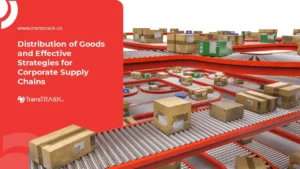
 Bahasa Indonesia
Bahasa Indonesia


